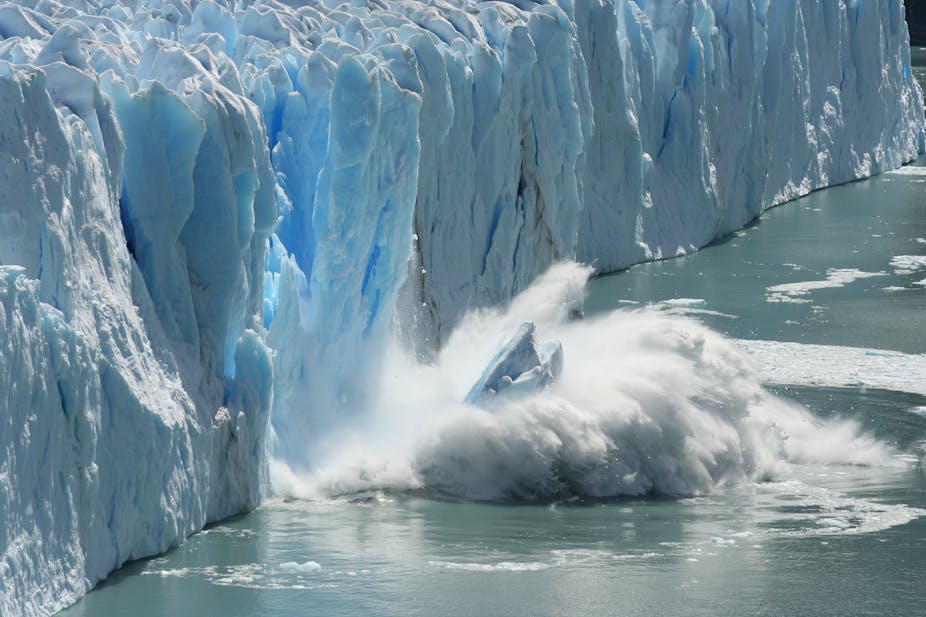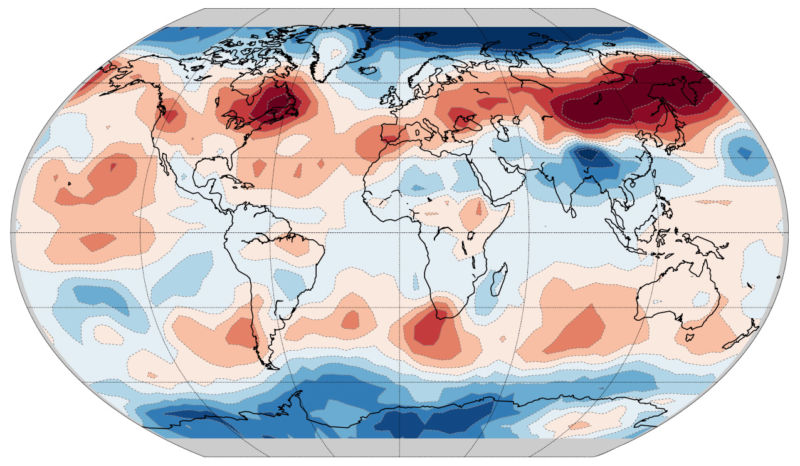
Climate scientists have dug deeper than weather station records and now have yet another reason to confidently determine that humans are causing the warming of our planet. Human-caused climate change, brought on by the burning of fossil fuels, is affecting seasonal cycle temperatures. In short, humans are shifting the seasons.
Satellites began recording global temperatures and compiling a record in 1979, and a new study performed by Ben Santer and researchers at the Lawrence Livermore National Laboratory used this data to look deeper at the seasonal cycle of temperatures around the world, with a goal of separating human and natural causes on climate.

Acting as detectives, the team searched for “fingerprints” of human-caused change in climate. They found signals in the seasonal temperatures in the troposphere (the area of the atmosphere just above Earth’s surface), as well as in the chemistry of the oceans and the rapid loss of sea ice in the Arctic, that differed from the natural changes expected in climate.

“We find that the model fingerprint of externally forced seasonal cycle changes is identifiable with high statistical confidence in 5 out of 6 satellite temperature datasets,” Santer states. In fact, the study states that the odds of these signals and changes occurring naturally are around 5 in 1 million- the physics show that the changes are being caused by increased greenhouse gas concentrations. This is the first time that a human “fingerprint” has been identified in the troposphere.
The researchers began by recording and studying the difference between the warmest summer months and coldest winter months in the satellite record. Santer explains that the temperature results are like waves washing onto a beach. The team recorded the monthly temperature lows (wave troughs) and monthly temperature highs (wave crests), and early on, the “waves” were fairly small. By 2016 however, the waves were coming in with lower troughs and much higher crests.

According to the study, the seasonal temperature swing has increased since 1979, more so in the Northern Hemisphere, and summer temperatures are rising faster than winter temperatures. The researchers then used a simulation of unchanging climate (pre-industrial revolution), as well as simulations of human-caused warming through 2016. What they found is that the models predict greater seasonal temperature swings in the mid latitude areas in the Northern and Southern Hemispheres.
Many of us have already observed the effects of these temperature shifts, with winters coming on later, intense temperature swings, hotter, drier summers in the mountains, and trees and plants flowering early. Both humans and animals will have to learn to adapt to these shifting seasons, and the ski industry may have to make some changes in opening and closing dates, snow making, and other mountain operations.

In an interview with Nature Magazine, Andrew Dessler, an atmospheric scientist at Texas A&M University stated that, while the study is solid, “[he doesn’t] think this solves a major problem in atmospheric sciences, nor does it change anything that [he thinks] about the climate system, but it does provide even more evidence that humans are altering the climate.” (USA Today)